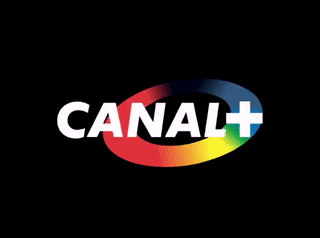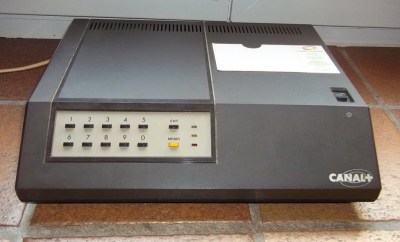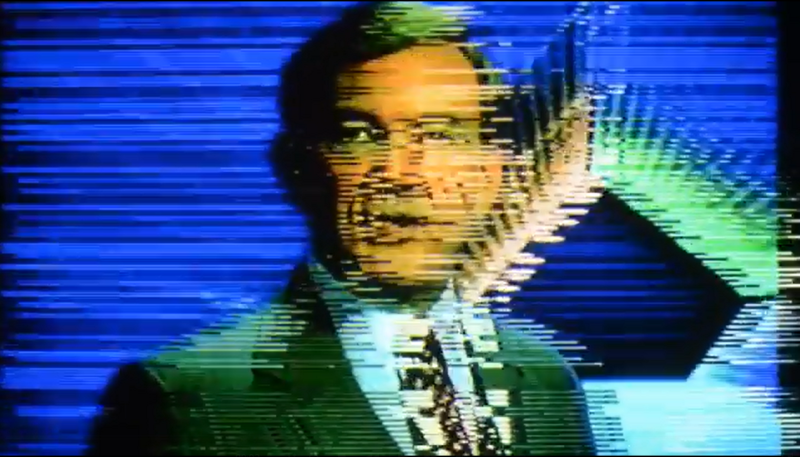Who among us didn’t spend some portion of their youth trying in vain to watch a scrambled premium cable TV channel or two? It’s a wonder we didn’t blow out our cones and rods watching those weird colors and wavy lines dance across the screen like a fever dream.
In the early days of national premium television in America, anyone who’d forked over the cash and erected a six-foot satellite dish in the backyard could tune in channels like HBO, Showtime, and the first 24-hour news network, CNN. Fed up with freeloaders, these channels banded together to encrypt their transmissions and force people to buy expensive de-scrambling boxes. On top of that, subscribers had to pay a monthly pittance to keep the de-scrambler working.
 In France, the first nationwide cable channel was Canal+, which debuted on November 4th, 1984. They might have adopted the VideoCipher system used in the States and been done with it, but they couldn’t — VideoCipher was meant for NTSC broadcast systems. French television is broadcast in SÉCAM format, which uses the same frame rate and number of interlaced lines as PAL, but processes the color information differently. Canal+ needed an encryption scheme to match. The system they came up, Discret11, with was simple and effective, but perhaps a little bit short-sighted.
In France, the first nationwide cable channel was Canal+, which debuted on November 4th, 1984. They might have adopted the VideoCipher system used in the States and been done with it, but they couldn’t — VideoCipher was meant for NTSC broadcast systems. French television is broadcast in SÉCAM format, which uses the same frame rate and number of interlaced lines as PAL, but processes the color information differently. Canal+ needed an encryption scheme to match. The system they came up, Discret11, with was simple and effective, but perhaps a little bit short-sighted.
Analog televisions used electron guns to paint the picture on the screen one line at a time very quickly. Discret11 encrypted the Canal+ signal simply by delaying the lines being drawn — filleting the picture by pushing the information off the screen to the right and back-filling it with blackness from the left. The system turned the audio into an unbearable whine by splitting up the signal into two bands and inverting the high and low ends.

Discret11 was named for the 11-bit key that it uses to seed a linear feedback shift register, which in turn computes the delay time for the lines. Subscribers had to enter this key into their decoder box, and Canal+ changed the key every month in an attempt to prevent piracy.
Schematics for a DIY de-scrambler began to be passed around a mere month after the service premiered. Although Canal+ continued on and became quite successful, the Discret11 encryption scheme was phased out by 1995.
Even so, the technology lives on as an artistic medium — you can buy a newfangled Discret11 encoder built from a decoder and make your own trippy videos.
Main image via @htp.syntonie
Got any old tech that you want us to look into? Send in your ideas for future installments.
















Oh the memories …
I now learn it was such a weak “scrambling”.
As a teenager in this era : it was such a gift to the “electronics” field in France ! maybe tens of electronics parts shops would strive from the sale of delay lines and MC68705 (to name the most “symptomatic” hints that somebody is building a “strainer” (passoire). The name comes from prisoners who would watch the scrambled TV sets through a pasta strainer to reduce the epileptic-unfriendly pictures.
When the signal used the much stronger encryption, the electronics parts shops died, one after the other.
Today there are only 2 shops that survived in Paris (online sales of Chinese parts for insignificant shipping costs did the rest).
Pretty cool, thanks for the hindsight!
You’re welcome !
It was my formative years, my “golden age” of learning the trade with whatever I could find… But I can easily swear : I never touched a decoder. From the very beginning, I was not interested in being a cheap customer and I invested early in tools and knowledge to design things by myself.
The slow and sad crash of the electronics landscape in Paris still aches me, since I could spend a whole afternoon, frolicking in the city, rummaging through their stock, discovering new stuff, buying cheap IDontKnowWhatThisIsButItLooksSoCoolOrICouldDesolderPartsFromIt
I agree the lack of electronic shops in paris is so sad :(
I really hope Saint-Quentin-Radio will survive for as long as possible.
Fortunately we still have Hackspark, which is more oriented towards modern diy stuff and not generic components, but the owner is extremely cool and if you visit paris and are electronics oriented, this is definitely a place to visit.
Sadly this has been the fate of electronics stores here in the US also, though I don’t know if there is any connection to American TV descramblers. I think it had more to do with changing trends and terrible mismanagement of electronics stores (I spent some time working for Radio Shack 30 years ago, and the signs of a dying business were already in place way back then).
“If you visit paris and are electronics oriented, this is definitely a place to visit.”
That’s the kind of thing that makes hackers different from other people.
Way back in the early 1990s, I ended up in Sete, France on a Saturday morning.
While walking from the trainstation to some place I could catch a bus to where I really needed to go, I walked past a Radio Shack. That freaked me right the heck out. That was the last thing I expected to see there.
Comes Monday, my co-workers asked me how my weekend trip to France was.
I was still sort of in shock about the Radio Shack, and mentioned that first (before telling them about the train ride and visiting my sister and the Mediteranean beach and so on.)
That got a laugh. I go off traveling in a foreign country, and the first thing I mentioned when asked about it was that there was a Radio Shack in France.
Yeah, hackers are different.
I remember Saint-Quentin-Radio of course but my shop of choice was R.A.M near Nation because I used to live here. There were Cibot Radio and Magnetic France too… sigh
Would be nice to have some detail on how the pirate boxes worked. The article doesn’t really explain.
It used analog delay lines, TDA4565 for example, then using a sync extractor and logic, the circuit was checking if the line was not delayed, delayed one time (900ns) or delayed two times (1.8us) and then it was delaying everything accordingly so every line was aligned again, resulting in a small black bar on the left of the screen, and loss of a bit of the picture on the right (as everything is shifted of about 1.8us)
Ah, memories. When I was in late primary school the local cable companies used simple negative notch filters to remove pay-TV channels. Every time new filters were installed in the alleyway cable cans a neighbour and I would traverse a square block, removing all of them. All of our neighbours couldn’t figure out why they were receiving free premium cable with a single day’s outage every three months or so. After a couple of years the cable co. sent reps around to every house, grilling the residents but the only two folks who shared the secret were myself and my best mate (and partner in crime).
It’s no coincidence that he & I were able to convince his father to buy us a pound of black powder when we were 13 years old, ostensibly to refill model rocket engines. Firecrackers were illegal up here so we made due with our home-made M80s, many built using the casings of the myriad of notch filters we had collected by then. We both have miraculously retained all limbs and appendages.
YGDES, I share your lament regarding component shops. In the 1970s and 1980s we had the ubiquitous Radio Shack (free battery club FTW!) plus a number of very well stocked dedicated component stores. They’re all gone now, the final one replaced with a home decorating store about six years ago.
Here’s software that emulates this Pay TV system on video files: http://cryptimage.vot.pl/cryptimage.php
Thanks, very useful link.
Bring me back some memories!
When they decided to upgrade the code in a middle of major sport coverage!
Another interesting project is HackTV that produces complete TV signal and can be outputted with cheap FL2K chipset adapter USB3 > VGA or HackRF. It can generate NTSC, PAL, SECAM test color bars, scramble video with Discret11, Nagravision Syster, Videocrypt, Eurocrypt (D2MAC) or insert any signals like Teletext, WSS: https://github.com/fsphil/hacktv
Somewhat similar situation in the UK to what YGDES describes in the 90s. If you were interested in PIC programming or smartcard readers the somewhat commodity nature of the greymarket satellite decoders put them in easier reach.
More recently I picked up a “decrypter box” at a yard sale for a cable radio station, which I assumed was gonna be out of date and useless, but I was also assuming it would have a PIC or something in it worth playing with… but nope, just two resistors, damn, at least I can use the box for a project.
PIC cards came later, in the early 2000s…
The 68705 prices crashed, DIY pirates moved to more sophisticated domain and Internet was the new key player (double entendre here). Tools would become easier to use, new “grey markets” replaced the old, more amateurish ones, the technological race went crazy…
And then, Youtube.
Yeah, Google killed the DIY market :-P
I gather you are French and we’re using “double entendre” more accurately but usually that means there is a sexual pun and I spent quite a while looking for it in your reply only to be disappointed!
It kind of double double entendres when you are aware that key and lock euphemism was used for the sexual organs in the past, and people went from getting their pr0n on pirated cable to getting it on the internet.
The implied is the pay channel Skinamax, which was scrambled but watched anyway.
Ohhh the first “saturday of the month” midnight movie on canal+ was enough “sous entendu” by itself ;) because “double entendre” f’ing doesn’t exits in french, it’s “sous entendu…”
There was also scrambled FIlmnet available on Astra 1A in the late 80s. I don’t remember the algorithm name but it was so simple that a decoder project was published in Elektor Magazine. Those pre-DMCA times were fun ;-)
Their encryption was VERY simple. They just alternated between normal and inverted frames. Very simple to workarounds if you had a tuner with CVBS output (e.g. VCR) and a TV set that would allow CVBS input (which was not common these days).
Interesting. The “decoder” had several diodes with multiple vias nearby, which I mistook for some scheme to modify decryption key when needed (see https://www.sat4all.com/forums/uploads/monthly_10_2011/post-51988-1318261289,4091.jpg). In my own defense, I was about 10 when I saw it last time ;-)
There were two tricks in the Filmnet encryption:
– the sequence of alternating between inverted and normal would change, I guess that would be “the key”
– they also inverted the sync ramps, so a normal TV would completely lose track
The trick from the nerd was to detect whether the frame was inverted (and that was not so difficult, as the sync ramp was also inverted) and then invert the frame (or not).
The resulting image was a bit shaky but very well watchable.
Ah the ‘ol Elektor decoder. I still keep it in my old projects bin. https://i.imgur.com/DXtAcou.jpg
Ah yes my satellite days. Back when online porn came in monochrome.
Ah the memories, watching “Scrambley Porn” on the TV, “Hey boobs, YES! Oh, wait, that’s just a fat guy.”
“Married with Children” had a scene like that in one of their episodes.
I remember D-MAC and D-MAC 2 decoder. It was going to change the world with widescreen, it was going to do HDTV in time and much more. It never did do it in the end. Remember having one with a pic chip card. Good days of free movies and stuff. It did last many years but never went on to be what they wanted it to be.
who remember meuh-meuh tv here ? :D
I do. Bloody BT848 chipset
I tried to decode the Canal+ scrambled images with one of those BT848 cards (Hauppauge PCI).
Now you could recycle those Hauppauge cards to add some GPIOs:
https://hackaday.com/2013/03/02/24-port-gpio-on-a-pci-card/
Canal+ was also broadcast terrestrially over-the-air wasn’t it? It wasn’t just a cable channel? ISTR that it also broadcast for periods ‘en claire’ where you could watch it without a decoder/decrypter as a kind of teaser for their main encrypted service?
Correct, broadcasted with terrestrial antennas, was channel #4 on every TV set, and most of the day, it was “en clair” so anyone could get a glimpse of the content, but quality evening movies were of course scrambled.
We had a black-market decoder with 3 buttons, when the scrambling keys changed every month, we hand to fiddle with them until the video was clear. (audio was always decoded clearly).
Audio scrambling was just a spectrum reversal. https://fabiensanglard.net/discret11/
Skytv New Zealand used videocrypt scrambling where the picture was cut line by line at a random point and the two parts swapped. But using a windows program called Hvcplus and a capture card decryption was almost perfect on a 700mhz computer it used tricks like delaying audio and video and working out the seed for the random number generator in advance by reconstructing the picture using the last solved line to help solve the next then using that seed to decrypt a few seconds of video the repeating over and over then sending the picture out to a tv.
IIRC, think that was an OTA and not sat scrambled issue. Remember those analogue days when one could actually tune in a weak tv signal.
Yeah, the digital signals are either coming in well, or just a bit weak which results in intermittent interrupts that make it unwatchable. That said, I have an attic antenna and just installed one at my mom’s place, and we get more channels with much clearer signal than were ever available back in the days of analog broadcasts.
Who can connect the dots with BT848 and Premiere? ;)